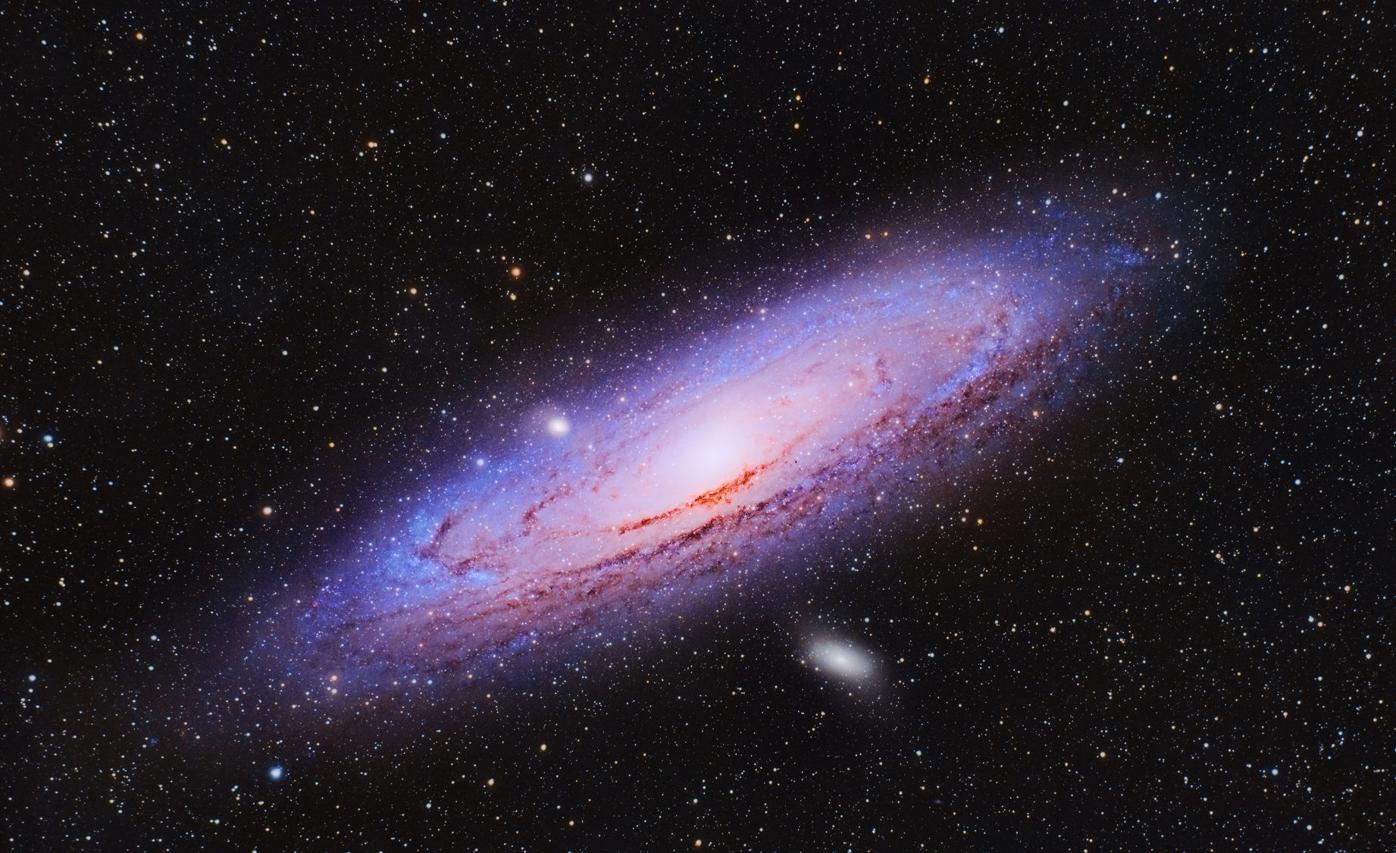The Andromeda Galaxy, also known as M31 or NGC 224, is a spiral galaxy located approximately 2.5 million light-years away from Earth. It is one of the closest galaxies to our own Milky Way, and it is the largest member of the Local Group of galaxies, which also includes the Milky Way, the Triangulum Galaxy, and numerous smaller galaxies. In this article, we will explore the history, structure, and unique characteristics of the Andromeda Galaxy.
 |
| Exploring the Wonders of the Andromeda Galaxy |
History
The Andromeda Galaxy has been known since ancient times, with the earliest recorded observation of the galaxy dating back to the Persian astronomer Al-Sufi in the 10th century. However, it was not until the advent of telescopes that the true nature of the galaxy was revealed. In 1612, the German astronomer Simon Marius was the first to observe the Andromeda Galaxy through a telescope, and in 1764, the French astronomer Charles Messier included the galaxy in his famous catalog of astronomical objects.
Over the next few centuries, astronomers continued to study the Andromeda Galaxy, using increasingly sophisticated telescopes and techniques to map its structure and composition. In the early 20th century, the American astronomer Edwin Hubble used the Andromeda Galaxy to demonstrate that the universe is expanding and that galaxies are moving away from each other at a rate proportional to their distance.
Today, the Andromeda Galaxy is one of the most extensively studied galaxies in the universe, and it continues to yield new insights into the nature of galaxies and the evolution of the universe.
Structure
The Andromeda Galaxy is a massive spiral galaxy, with a diameter of approximately 220,000 light-years, making it roughly twice the size of the Milky Way. It has a prominent central bulge, surrounded by a disk of gas, dust, and stars. The disk is composed of several spiral arms, which radiate out from the center and are populated by young, hot stars.
At the center of the galaxy lies a supermassive black hole, with a mass estimated to be around 100 million times that of the sun. This black hole is surrounded by a dense cluster of stars, which are thought to be in the process of being swallowed by the black hole.
One of the most striking features of the Andromeda Galaxy is its halo, a vast, diffuse region of gas and stars that surrounds the disk. The halo extends out to a distance of around 1 million light-years from the center of the galaxy, and it contains a significant fraction of the galaxy's total mass.
Characteristics
The Andromeda Galaxy is a fascinating object of study for astronomers, as it provides a unique laboratory for studying the formation and evolution of galaxies. Some of the key characteristics of the galaxy include:
- Rotation: The Andromeda Galaxy rotates around its central axis, with the outer regions of the disk moving at a slower speed than the inner regions. This differential rotation is thought to be caused by the presence of dark matter, a mysterious substance that makes up around 90% of the total mass of the galaxy.
- Star Formation: The Andromeda Galaxy is a site of active star formation, with new stars forming at a rate of around 1-2 solar masses per year. This high rate of star formation is thought to be driven by the galaxy's interaction with its companion galaxies, which stir up gas and dust in the disk and trigger the formation of new stars.
- Companion Galaxies: The Andromeda Galaxy is surrounded by numerous smaller satellite galaxies, including M32, M110, and numerous other dwarf galaxies. These companion galaxies are thought to be gravitationally bound to the Andromeda Galaxy, and they are likely to have played a role in shaping the structure and evolution of the galaxy over time.
- Collision with the Milky Way: One of the most significant events in the future of the Andromeda Galaxy is its collision with our own Milky Way galaxy, which is expected to occur in approximately 4.5 billion years. The two galaxies are currently moving towards each other at a rate of around 110 km/s, and they are expected to merge together over the course of several hundred million years. The collision is likely to trigger a period of intense star formation and result in the formation of a new, larger galaxy known as Milkomeda.
- Cosmological Significance: The Andromeda Galaxy is also of significant cosmological importance, as it provides a useful benchmark for studying the nature of galaxies and the structure of the universe. By studying the properties of the galaxy, astronomers can gain insights into the processes that drive galaxy formation and evolution, as well as the nature and distribution of dark matter in the universe.
Observing the Andromeda Galaxy
The Andromeda Galaxy is easily visible to the naked eye from dark skies, and it is a popular target for amateur astronomers and astrophotographers. With a small telescope or binoculars, it is possible to observe the galaxy's bright central bulge and prominent spiral arms.
For more detailed observations, astronomers use sophisticated telescopes and instruments to study the galaxy's structure, composition, and dynamics. One of the most important instruments used to study the Andromeda Galaxy is the Hubble Space Telescope, which has produced stunning images and detailed observations of the galaxy and its surrounding environment.
Conclusion
The Andromeda Galaxy is a fascinating object of study for astronomers, offering insights into the structure, evolution, and cosmological significance of galaxies. With its massive size, active star formation, and interactions with companion galaxies, the Andromeda Galaxy provides a unique window into the processes that drive galaxy formation and evolution.
As we continue to study and observe the Andromeda Galaxy and other galaxies like it, we will gain a deeper understanding of the nature and evolution of the universe itself, and the role that galaxies play in shaping the cosmos as we know it.


0 Comments